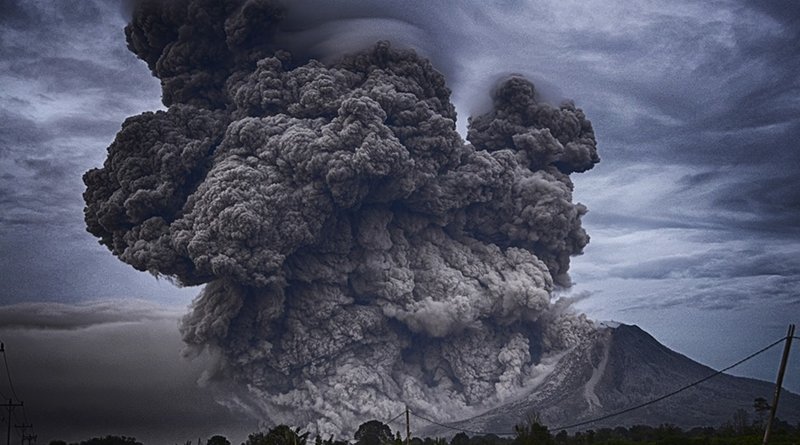2022 Hunga-Tonga Eruption Triggered Fast And Destructive Submarine Volcanic Flows
In 2022, the eruption of the submerged Hunga Tonga–Hunga Ha apai volcano triggered a fast-moving and destructive underwater debris flow that severed telecommunication cables and reshaped the surrounding seafloor.
The findings – representing some of the first fieldwork to document what happens when large volumes of erupted volcanic material are delivered directly into the ocean – provide new insights into the behavior and hazards of submerged volcanoes.
Explosive volcanic eruptions on land create pyroclastic flows of hot ash and rock that, when they reach the ocean, can trigger damaging tsunamis, surges, and turbidity currents. This creates hazards for underwater infrastructure and marine biological communities. However, it is estimated that the majority of Earth’s volcanoes are underwater. Despite this, explosive underwater eruptions are poorly understood, limiting the grasp of associated risks.
Michael Clare and colleagues address this knowledge gap by evaluating observations of underwater volcaniclastic flows triggered during the 2022 Hunga eruption in Tonga, which destroyed nearly 200 kilometers of crucial subsea telecommunications cables.
Combining data from the timing and extent of cable breaks, repeated bathymetric surveys, eruption observations, and rock core sampling, Clare et al. show that the rock and ash ejected during the Hunga eruption collapsed vertically and directly into the ocean and traveled as an extremely fast-moving and highly destructive underwater debris flow.
According to the findings, the submarine density current traveled more than 100 kilometers across the seafloor, reaching speeds of 122 kilometers per hour. What’s more, the volcanoclastic currents reshaped the seafloor around the Hunga volcano, excavating >100-meter-deep scours and channels into the surrounding seabed.
Similar landforms observed around many other submerged volcanoes suggest that powerful underwater flows have occurred during large eruptions at other sites worldwide.
“Ultimately, the Hunga volcano will be a vital case study for better understanding the risk that undersea and shallow-water volcanoes pose to the submarine environment and critical seafloor infrastructure,” write Rebecca Williams and Pete Rowley in a related Perspective.

